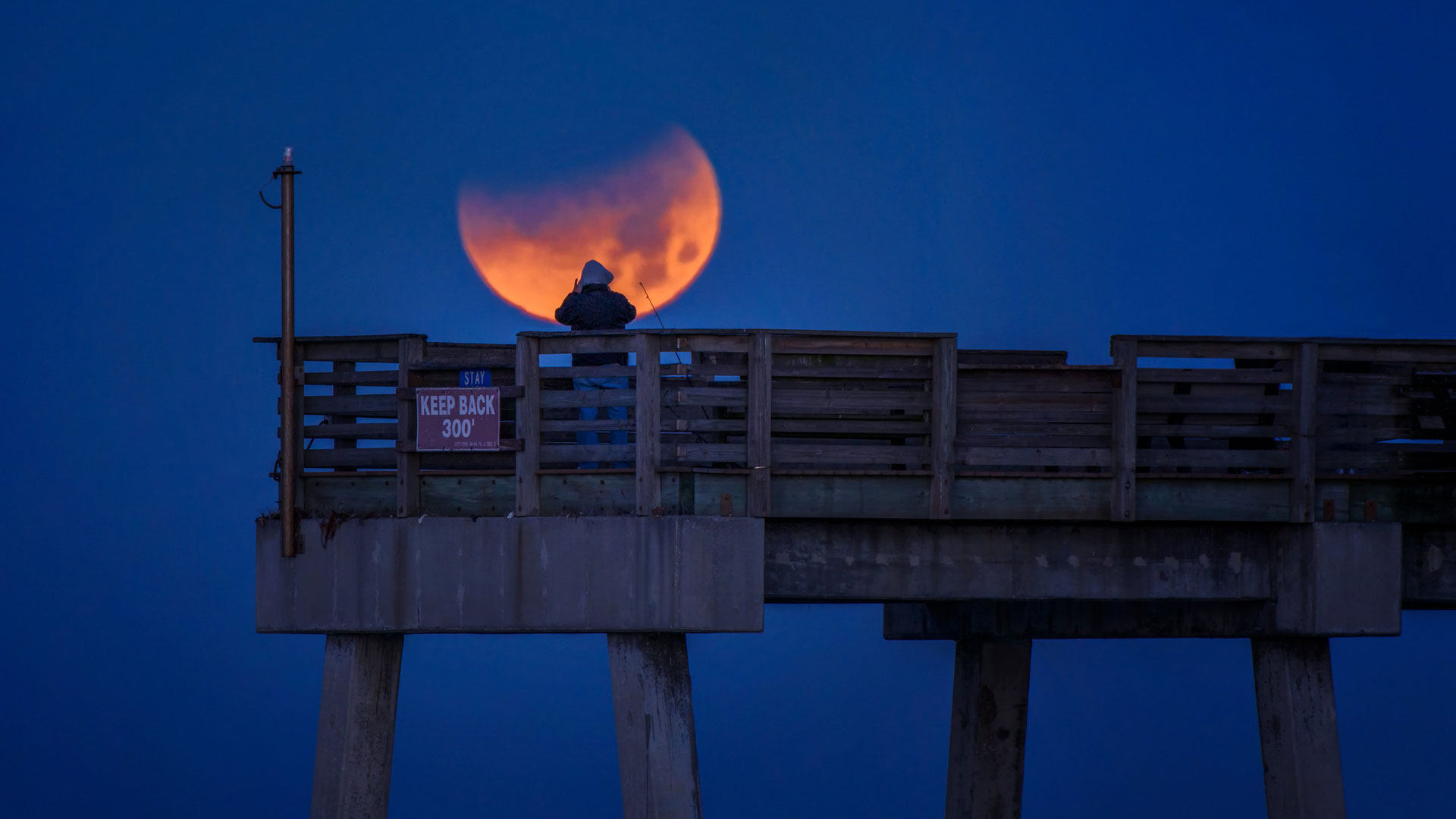 Fisherman on Venice Pier taking a photograph of the Supermoon blue blood moon with partial lunar eclipse, Venice, Florida taken on January 31, 2018.
Fisherman on Venice Pier taking a photograph of the Supermoon blue blood moon with partial lunar eclipse, Venice, Florida taken on January 31, 2018.
Stargazers will be in for another celestial treat Tuesday night as three cosmic events will occur at the same time during the full moon.
After last month brought space enthusiasts a blue supermoon, September’s harvest moon will not only coincide with a supermoon, but also with a blood moon and partial lunar eclipse.
While harvest moons happen each year close to the start of fall and supermoons three to four times a year, all three events taking place at the same time are “quite rare,” astrophysicist Teresa Monsue of NASA's Goddard Space Flight Center told NPR.
The moon is considered “super” when it is full and its orbit is at the closest point to Earth, according to NASA. When the Earth is positioned between a full moon and the sun, and the moon passes through Earth’s shadow, a lunar eclipse takes place.
How to see the harvest full supermoon and lunar eclipse
The best times to view the event will depend on your location, but the lunar eclipse will peak at 10:44 p.m. ET, according to NASA. All of North and South America will have a chance to see the partial lunar eclipse and harvest supermoon depending on the weather. Europe and Africa will also have an opportunity to see the eclipse.
This lunar eclipse will be a partial one, with only the upper portion of the moon being plunged into the darkest part of the Earth's shadow known as the umbra, Monsue said.
“Aside from the small darkened portion at the top of the moon's disk, most of the visible lunar disk will be in Earth's penumbra, the lighter portion of the planet's shadow that does not entirely block the sun's light,” she also said, adding that this will give most of the moon a reddish-brown appearance that we call a “blood moon.”
And unlike a solar eclipse, where you must wear special glasses to protect your eyesight when looking at it, skygazers can see Tuesday’s lunar eclipse with ease and without eye protection.
“It is safe to look directly at the moon during a lunar eclipse, because it is reflected light that is no brighter than moonlight,” Monsue said.
The eclipse should also be a good chance for views of contrast on craters and other features on the lunar surface if you use a telescope or binoculars, she said.
When can I see the next lunar eclipse and supermoon?
If you miss Tuesday night’s eclipse and supermoon, unfortunately the next one will not happen until Oct. 8, 2033, according to Monsue.
But you will be able to see another full supermoon on Oct. 17 and a total lunar eclipse on March 14, 2025.
There will also be an annular solar eclipse, or “ring of fire” eclipse, when the moon passes between the Earth and sun, but is at or near its farthest point from our planet, on Oct. 2. But the only potential viewers within the U.S. that will have a chance to see it will be in Hawaii.

By submitting your comments, you hereby give AZPM the right to post your comments and potentially use them in any other form of media operated by this institution.